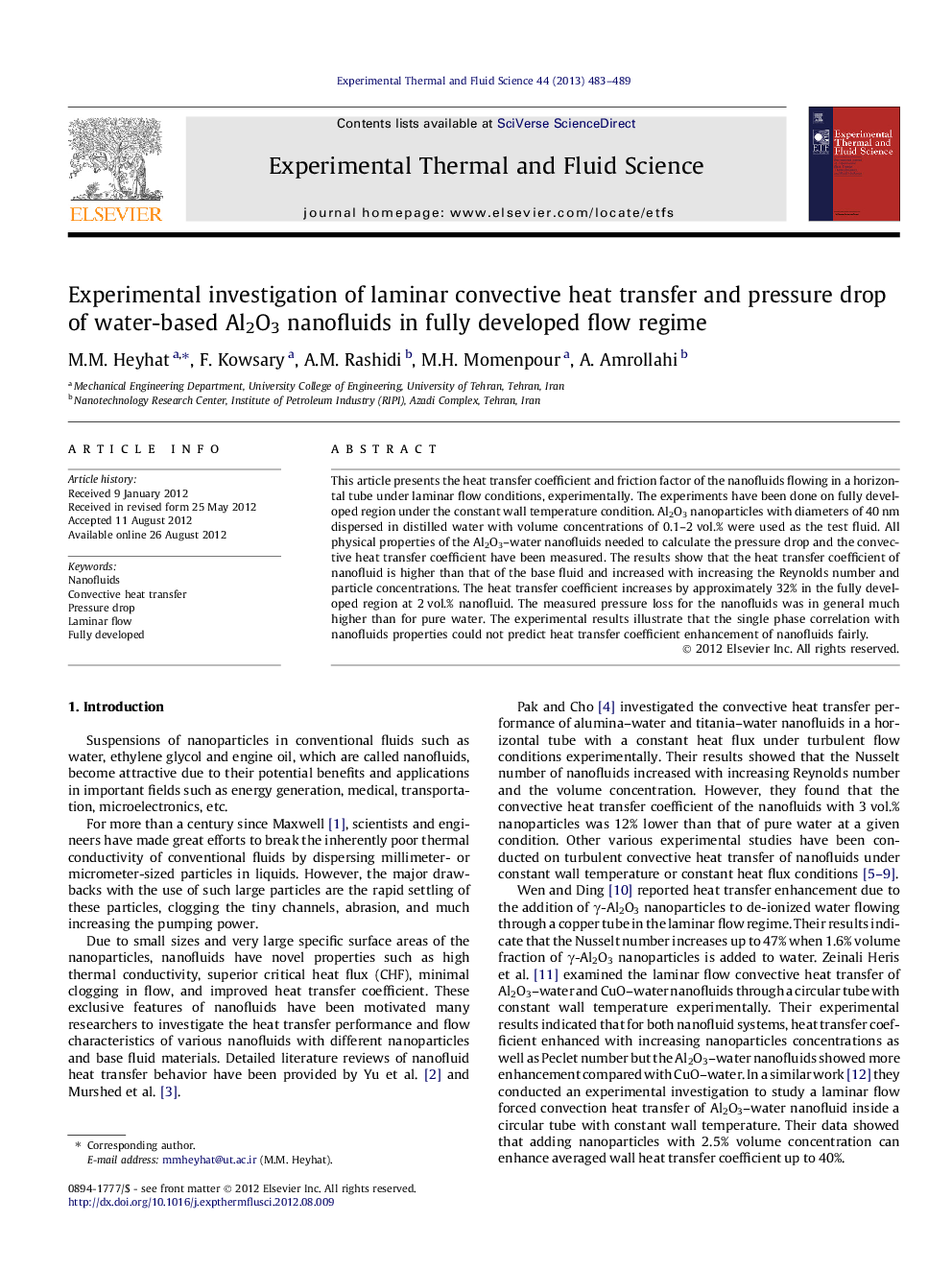| Article ID | Journal | Published Year | Pages | File Type |
|---|---|---|---|---|
| 651534 | Experimental Thermal and Fluid Science | 2013 | 7 Pages |
This article presents the heat transfer coefficient and friction factor of the nanofluids flowing in a horizontal tube under laminar flow conditions, experimentally. The experiments have been done on fully developed region under the constant wall temperature condition. Al2O3 nanoparticles with diameters of 40 nm dispersed in distilled water with volume concentrations of 0.1–2 vol.% were used as the test fluid. All physical properties of the Al2O3–water nanofluids needed to calculate the pressure drop and the convective heat transfer coefficient have been measured. The results show that the heat transfer coefficient of nanofluid is higher than that of the base fluid and increased with increasing the Reynolds number and particle concentrations. The heat transfer coefficient increases by approximately 32% in the fully developed region at 2 vol.% nanofluid. The measured pressure loss for the nanofluids was in general much higher than for pure water. The experimental results illustrate that the single phase correlation with nanofluids properties could not predict heat transfer coefficient enhancement of nanofluids fairly.
► All thermophysical properties of alumina nanofluids have been measured experimentally. ► Tow correlations for calculating the thermal conductivity and dynamic viscosity of nanofluids have been proposed. ► The Al2O3–water nanofluids have been produced by a two step method. ► Convective transport of nanofluids has been studied in fully developed region under the constant wall temperature. ► Traditional correlations failed to predict the Nusselt number and pressure drop of the nanofluids.
